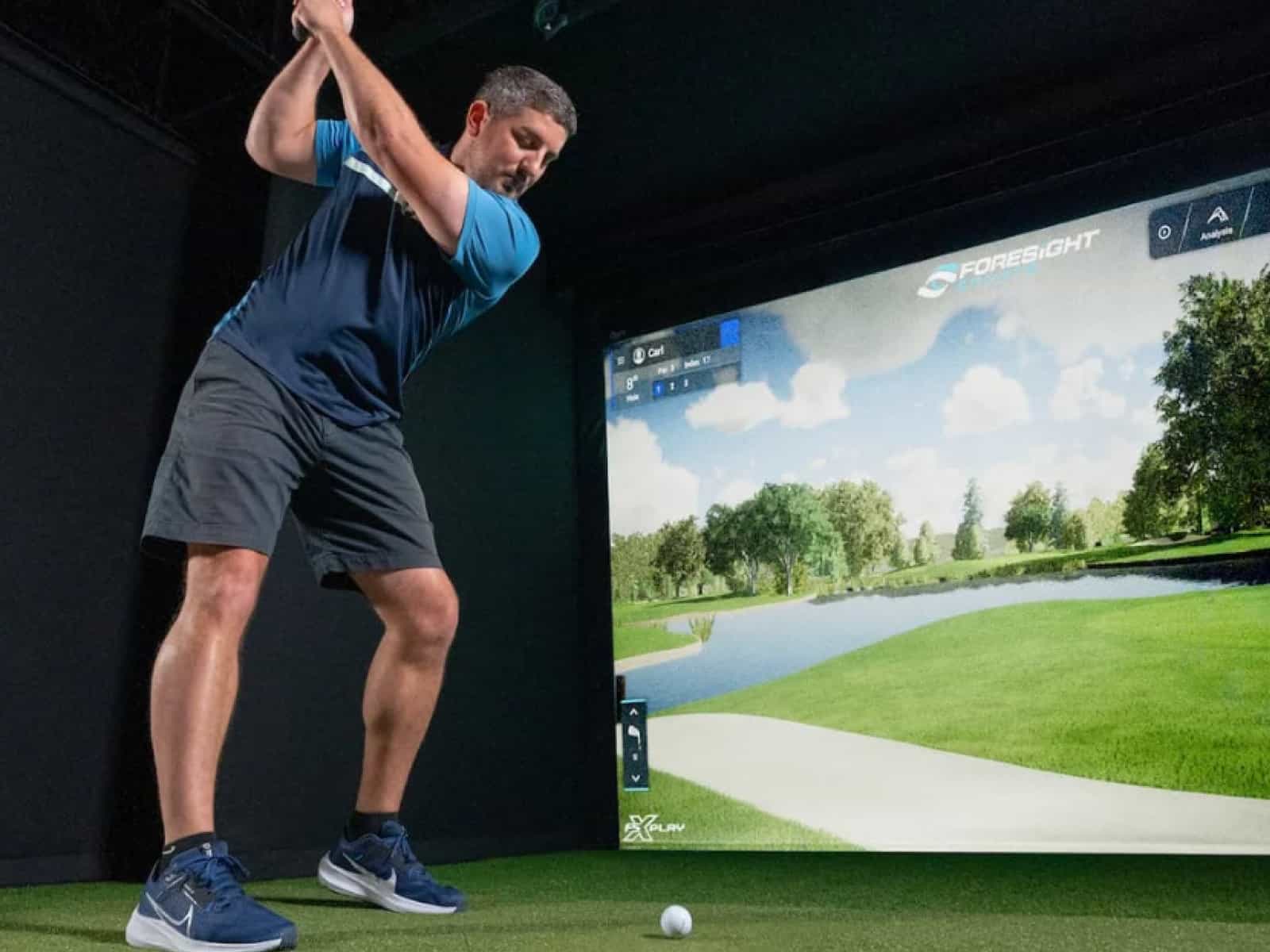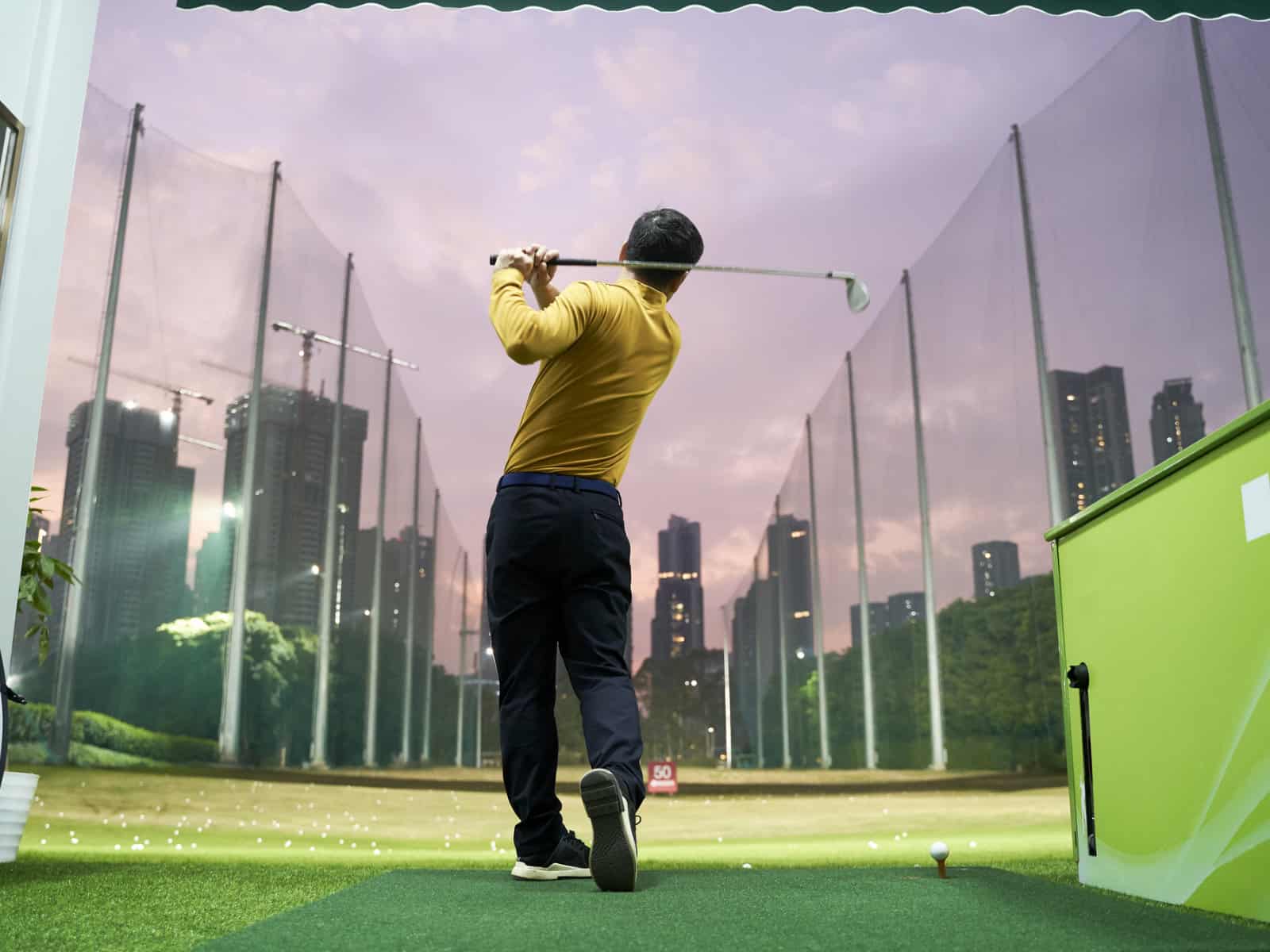Putting a golf simulator outside in your backyard or outdoor space can provide unique benefits compared to keeping it indoors. With ample room and natural lighting, an outdoor golf simulator offers a highly realistic and engaging experience. Whether you want to hone your skills or enjoy quality time with family and friends, an outdoor simulator provides convenience and entertainment.
However, installing a simulator outdoors also poses some unique considerations. Factors like weather, technology limitations, security, and maintenance need special attention when putting your simulator outside. But with careful planning and the right equipment, these challenges can be addressed to create a fun and functional outdoor golf simulator.
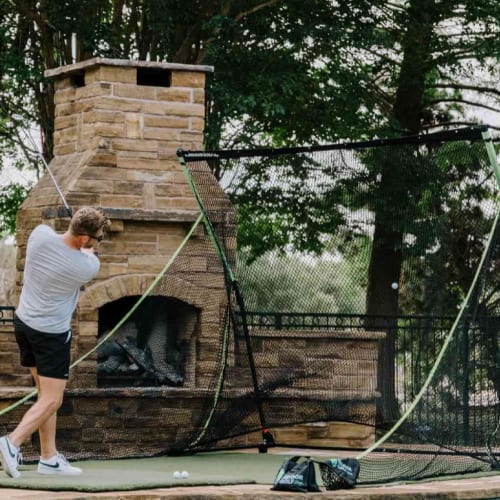
This guide covers the key advantages of an outdoor simulator, considerations for outdoor use, how to choose the right components and technology, installation tips, and ongoing maintenance. The ultimate goal is maximizing convenience and enjoyment while protecting your investment in the simulator equipment.
Key Considerations for Outdoor Use
Installing a simulator outdoors introduces some unique environmental factors to consider compared to indoor setups. Careful planning and choosing equipment to withstand the outdoor elements is crucial for maximizing durability and longevity.
Weather Resilience
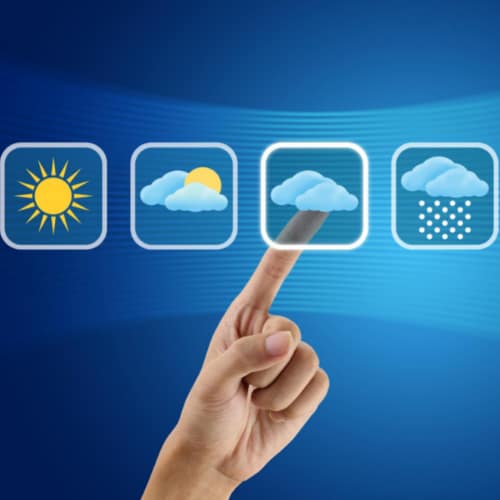
The varying weather outdoors can impact sensitive simulator components. Key factors to address include:
- Rain/humidity – moisture can damage electronic equipment and affect sensor accuracy. Choose water-resistant casings.
- Wind – gusts can topple freestanding nets or shake enclosures. That’s why you should secure them tightly with anchors.
- Sunlight – bright light affects projector visibility. Install projectors under shaded overhangs.
- Temperature – extreme heat/cold can affect system performance. You need to think of a place to store everything safely when not in use.
- Dust/debris – can build up on mats, sensors, and screens; so regular cleaning is a must.
In addition, protective solutions include weatherproof outer casings, sturdy covers or partial/full shelters and garages.
Technology Considerations
Optimal technology differs for indoor vs. outdoor simulators. For instance, we have discussed, tested, and reviewed the top golf simulator systems that are convenient for outdoor use in this article. Feel free to check it out.
Here are a few things you must consider:
Launch monitors
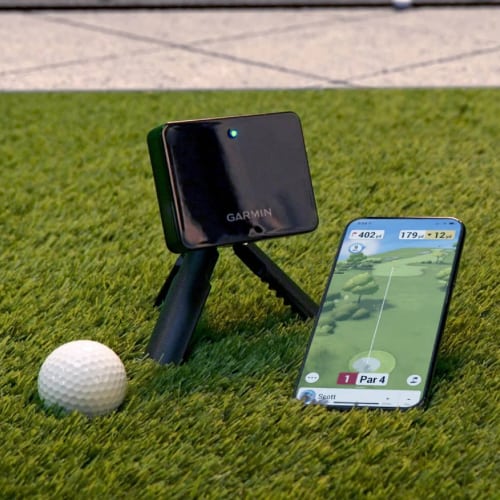
Radar Doppler monitors provide the most accurate ball-flight data outside. Portable photometric units can work outside, but you need to ensure the camera lens doesn’t come into direct contact with the sun’s rays. Infrared-based systems like Optishot are out of the question, as their accuracy is heavily affected by daylight.
Projectors
You need high brightness and lens coatings for daylight visibility. A high-lumen projector (around 5,000- 6,000 or even more) is recommended for outside use (especially during the day). Using a unit with a lower lumen count means the image won’t be bright enough to be seen in ambient lighting.
Displays
Outdoor TVs or monitors are needed if you are not using projectors. For the display hardware, you will need to think of installation and mounting mechanisms outside, and this may require a bit of creativity.
Mats
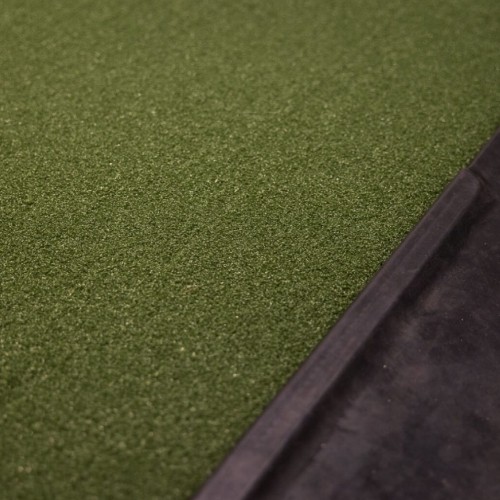
These are important for protecting your tracking sensors from the elements. They are also crucial in providing a comfortable feel and playing surface that mimics what you get from real turf.
Portability
Opting for a portable simulator package is your best bet for outdoor use. Portable simulators allow for the following:
- Easier setup and takedown for storage.
- Relocation as needed for events or temporary use.
- Options like foldable nets, retractable screens, and mobile enclosures.
These help make setup and disassembly much easier and faster. You can quickly install the system for a few swings/ rounds and then store everything away in a safe location to make sure your investment won’t be ruined by the elements, stolen or vandalized.
Security
This is another major factor to keep in mind while planning your outdoor simulation setup: Outdoor simulators need protection from many things, including the following:
- Theft – A lockable storage for components will be ideal to ensure no one steals your package components.
- Vandalism – Leaving your components unprotected may result in damage from passersby. Installing security cameras and motion detectors that activate lights at night will be a good place to start securing your package.
- Unauthorized access – Things like gates, fencing, and lighting will definitely help you limit access to the simulator area and be in control of who can get in and reach your simulator.
Proper planning for weather, tech limitations, portability, and security are key for outdoor simulator success. They need to be taken seriously for you to have an enjoyable and extended experience without any issues.
Choosing the Right Outdoor Simulator
Selecting the optimal outdoor simulator setup involves weighing factors like realism, accuracy, budget, space, and convenience. Key considerations include:
Types of Simulators
The most basic outdoor simulators utilize practice nets for basic swing work. These provide an enclosed hitting area and backstop, but lack advanced shot tracking and course simulation. Practice nets offer a quick and affordable way to hone your swing mechanics at home.
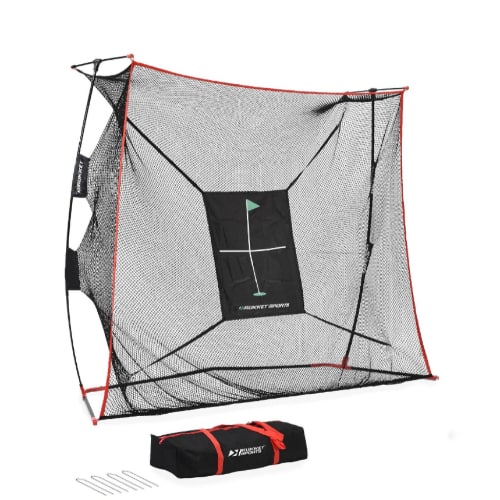
For more immersive simulation, enclosed bays provide greater realism through impact screens and projection systems. But these require extensive installation and permanent infrastructure.
Launch Monitor Technology
A major differentiator is the launch monitor technology used to track ball and club data. Radar-based systems, which use radio waves like Doppler radar, deliver highly precise swing analysis and shot diagnostics. This makes them best for dialing in your game through tour-level metrics outdoors. Photometric systems use high-speed cameras that visually detect ball flight and are more susceptible to interference from sunlight and weather elements.
Projection Systems
For visualizing the virtual courses, high-lumen projectors properly positioned can reflect vivid imagery off impact screens. However, projectors must be shielded from weather and require controlled lighting conditions.
LED panels are self-contained displays unaffected by sunlight but offer lower image resolution than projectors.
In addition, standalone launch monitors with built-in displays provide excellent swing analytics without coupled visuals of the virtual courses. Excellent examples include the Foresight Sports GC3 and GCQuad, Uneekor’s EYE MINI and Full Swing’s Kit launch monitors.
Customization Options
Customizing your simulator’s capabilities is key for matching its functions to your needs. With software, choose options focused on entertainment, competitive games, or in-depth skills training per your goals. Additionally, select from famous real-world courses or fictional options when playing virtual rounds.
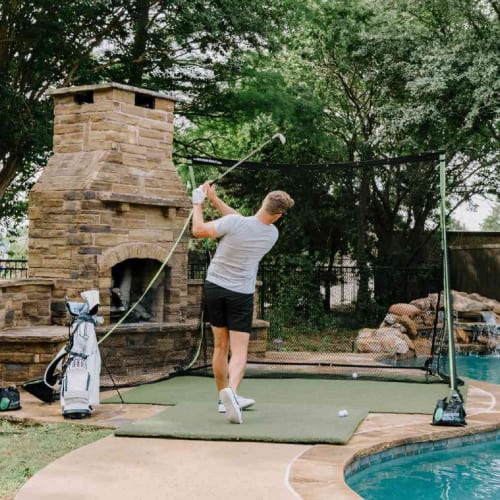
Hitting mats designed for outdoor use provide a durable, consistent hitting surface and can mimic the feel of real turf. Adjustable stance configurations allow both right and left-handed players to optimize ball position.
By prioritizing the accuracy of your launch monitor, the realism and resilience of your enclosure and display, and customizations for your needs, you can create the ultimate outdoor simulator experience within your budget. A tailored combination of performance analytics, realistic visualization and gameplay will make your home simulator a go-to training and entertainment outlet.
Installation and Maintenance
Proper installation and ongoing maintenance are crucial to getting the most out of an outdoor simulator.
Installation Process
Installing an outdoor golf simulator outdoors requires careful planning and execution to optimize performance. Key steps in the process include:
- Site Selection – Choose an open, flat area of your yard with adequate space to install the components. Consider optimal angle alignments to preserve shot accuracy.
- Equipment Setup – Position launch monitors, impact screens and projectors/displays according to manufacturer specifications for each component. Proper initial placement saves adjustment effort down the line.
- Calibration – Upon equipment placement, carefully calibrate sensors through manufacturer software for launch monitor accuracy. For projectors, calibrate image sizing, focus and luminosity.
- Anchoring – For freestanding nets and enclosures, securely anchor to the ground per instructions to prevent shifting or collapse in windy conditions. Anchoring ensures stability.
Ongoing Maintenance
Consistent maintenance keeps an outdoor simulator performing at its best. Important regular tasks include the following:
- Sensor Cleaning – Carefully brush debris from optical and radar sensors and wipe them down with microfiber cloths to maintain unobstructed functionality.
- Screen/Lens Cleaning – Use manufacturer-recommended cleaners and gentle microfiber cloths to remove debris without damaging impact screens or projector lenses.
- Mat Upkeep – Routinely brush turf mats and inspect for tears or excessive wear. Replace matting or turf materials as needed to maintain an ideal hitting response and feel.
- Hardware Checks – Verify all physical connections are tight, including launch monitor stands, netting, and wiring. Replace any damaged components like cracked enclosures or netting showing holes.
Staying on top of cleaning, visual inspections, and hardware integrity allows an outdoor simulator to keep operating at peak performance season after season.
Winterizing

For cold climates, proper winterization protects your investment in off-seasons:
- Store Nets/Mats – Take down and store any weather-vulnerable netting, turf mats, or fabric components in a dry, covered location.
- Weatherproofing – For permanent enclosures and hardware, cover with durable waterproof casings and weather seals to protect from snow, ice, and moisture infiltration.
- Equipment Storage – Carefully disconnect electronics like launch monitors and projection systems and store them in a temperature-controlled environment until spring.
- Spring Reboot – After winter, reconnect all components, recalibrate sensors and projectors, and thoroughly test the system before regular use.
While an initial investment, appropriate winterizing and spring rebooting will maximize an outdoor simulator’s longevity through harsh seasonal changes. Taking proper precautions makes your system last.
Conclusion
Installing a golf simulator outdoors can provide golfers with ample space, natural lighting, and accessibility to practice or play anytime. However, protecting equipment from the elements requires careful planning and preparation.
With the right protective measures and consistent care, an outdoor simulator can offer years of high-performing enjoyment. Golfers of all skill levels will gain more opportunities to practice, play, and bond with family and friends without the need to go anywhere.
We tried to cover the topic in as much detail as possible. If you still have any questions or comments, feel free to contact us in the comments section below or via email.
Thanks for reading!


